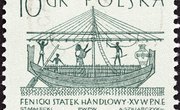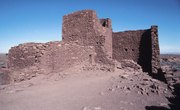Indigo is an ancient plant producing a dye that has been used for thousands of years by various cultures. The indigo plant originated in the Middle East, and was so scarce and valuable that the color indigo came to be associated with wealth and power. The cultivation of indigo eventually spread to the southern American British Colonies where it became one of the most profitable crops.
History
Indigo, in existence for thousands of years, was traded in the Mediterranean and in medieval Europe. After 1498, when sea routes to India were opened up, the commercialization of indigo dye increased. But, European indigo was considered inferior to that from the East. Unable to keep up with demand, the Dutch and British East India Companies started cultivation in Jamaica. The growth of sugar plantations moved indigo to South Carolina by the early 1700s.
Significance
The color indigo, a deep rich blue-purple, has been highly prized throughout the centuries. In biblical times, the scarcity of indigo meant only the wealthy could afford it; giving rise to the idea of purple being "the color of kings." The Virgin Mary is often robed in purple in religious paintings. In Elizabethan England, the English Sumptery Laws decreed that only those powerful persons of a certain social standing and wealth could wear purple.
Function
Indigo has been used by various historical cultures. In the East, indigo was used for batik fabrics. The indigenous tribes of the Americas used indigo for painting and as mummy shrouds. In North and West Africa, indigo-dyed cloth symbolizes wealth and fertility; powerful people use indigo for clothing and skin dye. The enslaved Africans from Mali and Senegal brought the practice of using indigo to dye fabrics into intricate patterns to the American South.
Types
Types of indigo plants include: Indigo arrecta Hochst, originating in East and South Africa, it was grown in India and imported to European colonies. It has the greatest amount of pigment. Indigofera suffruticosa Mill, originating in the Mexican desert, it was used by the Mayan Indians. It was produced in China, Africa and North America in the 18th and 19th centuries. Indigofera tinctoria L. is the most commonly used and the most easily cultivated. It originated in India and traveled through the Arab and African trading routes.
Geography
In the 1700s, South Carolina became the colony which developed and produced the commercial indigo dye. South Carolina grew rice in the marshy areas, and indigo grew on the dry high ground; the two lucrative crops took advantage of free slave labor. From 1745 to 1775, using seeds originally grown on the island of Antigua, an indigo manufacturing process was developed that increased indigo production from 5,000 pounds to 1,107,600 pounds annually.
Related Articles
Writer Bio
Pamela Hilliard Owens is a former public school teacher, college instructor and sales manager. With a master's degree in English, she writes and edits for individuals, grad students and businesses in nine countries. She founded Writing It Right For You in 1998 and is published in many online and print media.











